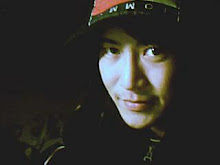Posted on: Friday, 27 June 2008, 06:02 CDT
By Shelley, Suzanne
MATERIALS Chemical engineers have developed a "self-assembling" method that could allow optical devices to be made less expensively than conventional processes, which require complex etching and other techniques common in the semiconductor industry.
The method, developed at Purdue Univ., works by positioning tiny particles onto a silicon template containing precisely spaced holes that are about one one-hundredth the width of a human hair. To produce the singlelayer structure, the engineers used Langmuir- Blodgett monolayer deposition, a standard technique used in physical chemistry, primarily to create lipid membranes for research.
The template is immersed in water in a trough-like vessel where a layer of particles has formed at the surface. As the template is pulled vertically out of the trough, the partides are pushed into the template holes by capillary force, the same phenomenon that causes water to rise to a higher level in a tube placed in a pool of water. It is critical for the particles to be spaced properly prior to the Langmuir-Blodgett deposition so that water can draw the particles into the holes in the template using capillary force, explains You-Yeon Won, an assistant professor of chemical engineering.
GA_googleFillSlotWithSize("ca-pub-5440138744487553", "News_Main_300x250", 300, 250);
The researchers have used the technique to create a "nearly perfect two-dimensional colloidal crystal," or a precisely ordered layer of particles, which is a critical step toward growing three- dimensional crystals for use in optical technologies.
"Making the first layer is very difficult, so we have taken an important step in the right direction," Won says. "Creating three- dimensional structures poses a big challenge, but I think it's feasible."
The single-layer structures might be used to form micro lenses to improve the performance of optical equipment, such as cameras and scientific instruments, or to control the color and other optical properties of materials for consumer products. More importantly, the technique could be used to create "omni-directional photonic band- gap materials," which would dramatically improve the performance of optical fibers, the researchers say. Omni-directional coatings would increase the amount of light transmitted by fiber-optics, and could possibly be used in future sensor technology and in optical computers and circuits that use light instead of electronic signals to process information.
The Purdue engineers are now investigating the creation of three- dimensional crystals from the two-dimensional structures. Currently, omni-directional materials are prohibitively expensive to manufacture.
A scanning electron microscopy photo shows a side-by-side comparison between Purdue's structure (right) and a structure that results when a template is not used. Photo courtesy of Y. Won and J. Hur.
Copyright American Institute of Chemical Engineers Jun 2008
(c) 2008 Chemical Engineering Progress. Provided by ProQuest Information and Learning. All rights Reserved.
Source: Chemical Engineering Progress
2008年7月27日 星期日
訂閱:
張貼留言 (Atom)



沒有留言:
張貼留言